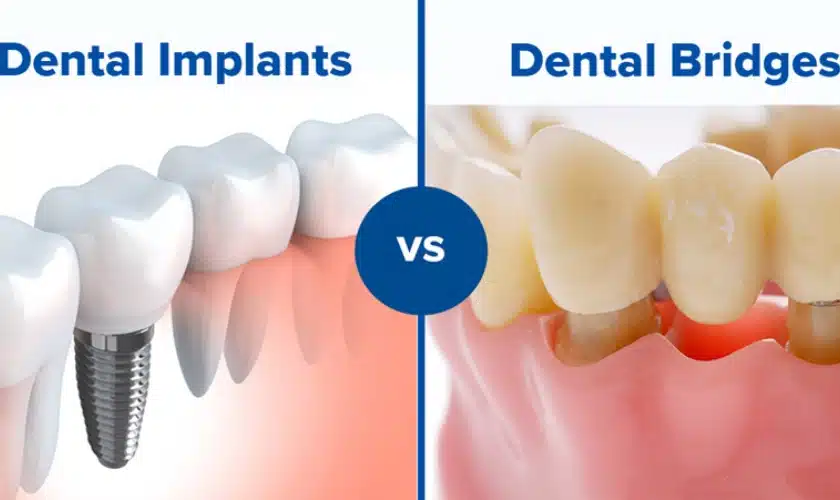Dental Sense - The Facts
Dental Sense - The Facts
Blog Article
Dental Sense Can Be Fun For Everyone
Table of ContentsThe Facts About Dental Sense UncoveredTop Guidelines Of Dental SenseDental Sense - QuestionsThe Main Principles Of Dental Sense
are medical gadgets surgically dental implanted right into the jaw to bring back an individual's capability to chew or their look. They provide support for synthetic (phony) teeth, such as crowns, bridges, or dentures. When a tooth is lost because of injury or disease, an individual can experience problems such as rapid bone loss, faulty speech, or adjustments to chewing patterns that cause discomfort.Dental dental implant systems include an oral implant body and oral implant joint and might also include a joint addiction screw. Wisdom tooth cavity. The oral implant body is operatively inserted in the jawbone instead of the tooth's root. The dental implant joint is normally affixed to the implant body by the abutment fixation screw and extends through gum tissues right into the mouth to sustain the attached man-made teeth
(https://ameblo.jp/dentalsense1/entry-12882048969.html)Structure of The Dental Implant System selecting oral implants, speak with your dental service provider about the possible benefits and risks, and whether you are a prospect for the procedure. Points to take into consideration: Your general health is an essential consider figuring out whether you are a good prospect for oral implants, how much time it will take to heal, and for how long the implant may remain in area.
Cigarette smoking may impact the healing process and reduce the long-term success of the dental implant. The recovery process for the implant body may take several months or longer, throughout which time you commonly have a temporary joint instead of the tooth. the oral implant procedure: Carefully comply with the dental hygiene instructions offered to you by your oral copyright.
The Ultimate Guide To Dental Sense
Implant failure can result in the demand for another surgical procedure to repair or change the dental implant system. Recovers the capacity to chew Recovers aesthetic look Aids maintain the jawbone from shrinking as a result of bone loss Maintains the wellness of the bordering bone and gum tissues Helps keep nearby (neighboring) teeth secure Enhances quality of life Damages to surrounding natural teeth throughout dental implant placement Injury to the surrounding tissues throughout surgical treatment, such as sinus opening Injury during surgery (for instance, fracture of surrounding jawbone) Insufficient function, such as seeming like the teeth do not bite with each other normally An experience that the tooth hangs or turning in position arising from a joint screw loosening up Implant body failing (looseness of the implant body) because of systemic infection, which may be most likely in clients with unchecked diabetics issues because of neighborhood infection in bone and gums supporting the dental implant body as a result of delayed recovery, which may be more probable in people who smoke Problem cleaning the gum tissues around the implant, causing bad oral hygiene Untreated gum disease Post-surgical tingling because of nerve impingement or damage Constantly notify wellness care providers and imaging service technicians that you have oral implants before any magnetic resonance imaging (MRI) or x-ray procedures.
FDA is not familiar with any kind of adverse occasions reported for MRI or x-ray treatments with oral implants. Oral implants systems are commonly made of products that comply with worldwide agreement criteria of the International Organization for Standardization (ISO) or ASTM International. These standards have information of what makes a safe material.

An oral implant is a structure that changes a missing tooth. With screw-like gadgets, the cosmetic surgeon inserts a dental implant right into the jawbone, and it works as a support for a fabricated tooth, called a crown. A gadget called an abutment attaches the artificial tooth to the oral implant. The crown is custom-made to fit the person's mouth and match the color of their teeth.
The smart Trick of Dental Sense That Nobody is Discussing
Some individuals are not eligible for oral implant surgical treatment. It is for oral cosmetic surgeons to operate individuals with: acute illnessuncontrollable metabolic diseasebone or soft tissue illness or infectionIf these concerns are settled, an individual can have the surgical treatment. In, oral surgeons abstain from operating individuals with: If people with any one of the above undergo dental implant surgical treatment, there is a greater threat of the dental implant failing.

Dental dental implant surgical treatment is a tailored process. Provide you time to heal. Attach the article and final crown, bridge or denture.
Next off, your cosmetic surgeon will carefully position the dental implant right into your jaw. Your specialist will rearrange your gum tissues and shut the incision with stitches. If your dental implant is near the front of your mouth, your dental professional will make a momentary tooth for you to use until you recover. This way, you won't have a gap in your smile while you recoup.
The Single Strategy To Use For Dental Sense
During the healing stage, your jawbone must fuse to the oral implant. This procedure can take anywhere from 3 to 9 months.
As soon as your implant heals, your this contact form dental professional can affix the abutment (small connector blog post) and your last reconstruction (crown, bridge or denture). This typically takes regarding one hour to complete and may call for a second small surgical treatment. You shouldn't feel any type of discomfort during your oral implant treatment due to the fact that your supplier will utilize medicine to numb your periodontals.
Report this page